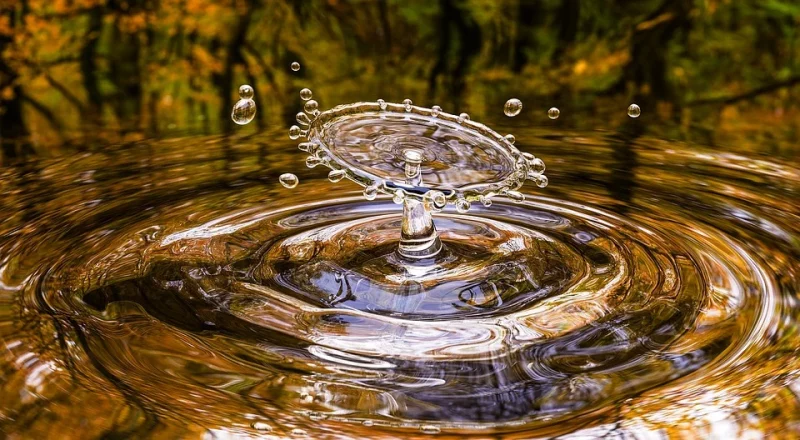Why is there water in my dryer? It’s due to several reasons such as a cracked dryer vent, broken flappers, blocked duct, and condensation. The mold, mildew, and water damage are causes of a leaky and dysfunctional dryer vent at home, as this is an issue that affects almost every family.
Leakage that occurs in a dryer vent requires numerous options to consider.
Nonetheless, moisture in a dryer vent commonly occurs without anticipating it in drying equipment. There are reasons why water is there in a dryer, so read the article and get the best solutions to fix the problem and know why there is water in your dryer vent. My friends, there are more things that you should know, so without further ado, let’s start!
Reasons Why There Is Water In My Dryer
Below are the reasons why there is water in my dryer.
#1. A ductwork not insulated properly
Improper insulation in the dryer’s duct is one cause of water inside a dryer vent. A long duct that passes the impermanent environment, like the attic or basement, accumulates moisture in the vent. This is true as temperature changes the same with warming up a vehicle on a cold day. Dampness and condensation mount up on the interior, and wet and warm air in a dryer directly touches the cold and dry air in the attic, and wetness accumulates inside a dryer vent.
#2. Cracks or vent holes
Leakage in the dryer vent pipe is one cause, and water condensation or leakage from lines next to the vent exterior or line causes water issues. The good thing is that experts can figure out why the dryer exhausts and leaks, identify this issue as critical, and solve it right away.
#3. Exhausts vent in the attic or garage
Carry out dryer ventilation in the attic or outside as the dryer vents exhaust the garage or attic. Issues can occur with these installations that can be costly to fix the vent pipe exterior for specific abnormalities. As hot air evacuates on a tiny surface, it causes moisture issues, resulting in leakage in a dryer vent. Mold, moisture, and mildew tend to build up inside the building.
#4. Broken flapper on the door’s exterior
Fitted in the flappers are the dryer vent pipe’s exteriors found in the pipe’s outer edge, and warm air tends to escape. As the air in the dryer vent, the flapper opens so firmly that it if a valve does not close properly. Snow, water, and frost outside may come out into the dryer, causing a leak. Get the flapper tested as you go outside and shut it appropriately to solve this problem and change if something does not work with it.
#5. Condensation
Condensation is a significant issue in a dryer’s ductwork, particularly in cooler regions. Shield the dryer’s superheated steam from surrounding cold, as released outside. Precipitation occurs from the air vented out and reaches with freezing tubing, and dryer vent piping does not correctly shield. Dripping water and condensation occur as outcomes in the process. Troubleshoot the issues as you cover the dryer vent pipe’s diameter to avoid condensation in the exhaust pipe and ensure warm air in a dryer does not change in temperature.
#6. Blocked dryer vent
Blockage in a dryer vent is one cause of leakage, and stray lint and fabric tend to stay in the vent over time, hindering the pipe and preventing air from moving. The hot and damp air a dryer exhaust moves anywhere as it flows that this condensation results in water leakage in a dryer vent. Clean the pipe in a dryer vent with a soft bristle brush to remove the debris, dirt, and waste collected. Solve the problem immediately to allow hot air to move through.
Ways To Prevent Moisture From Occurring In A Dryer
Condensation in a dryer vent causes clothes to dry longer than before; you must remedy the situation as you check for some blockages while it’s normal for moisture to occur because hot air mixes with the wet clothes in the drum, water should instead filter out the system. Follow these ways to prevent water from occurring in a dryer.
#1. Installing or replacing booster or vent flap
Stuck flap brings excess condensation, so install or replace the vent flaps in this case. Follow the directions when you purchase it.
#2. Installing a vent booster
Install a vent booster or forced vent, with a fan attached to a vent pipe that pushes the air out. If a more significant atmosphere emits out, less air is also allowed to stay there, creating condensation. Buy the product at an internet retailer or home improvement store.
#3. Changing the plastic ductwork
A dryer produces condensation that depends upon the material type used for a dryer’s duct. A plastic duct is likely to accumulate moisture compared to a metal duct. A gummy paste occurs as moisture gets inside the plastic duct and combines with lint. The paste will limit air circulating, and water will fall into a dryer. Change the plastic ductwork like heavy-duty metal. Choose a metal duct with no ribbing, so moisture does not trap inside the ribs.
It’s A Wrap!
Now you learn why is there water in my dryer because of a cracked dryer vent, broken flappers, blocked duct, and condensation, and you also know the ways to prevent moisture from occurring in a dryer and the reasons why water is precisely in a dryer!

